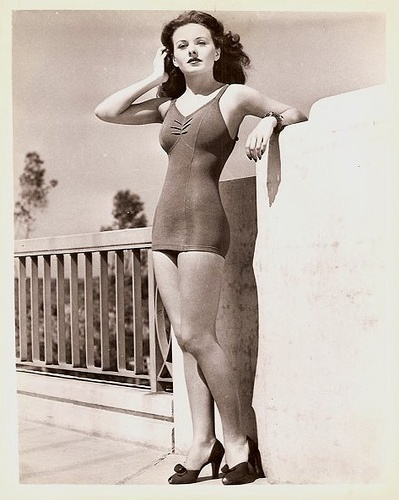When you hear the name Hedy Lamarr, your mind probably conjures up images of a glamorous Hollywood actress who lit up the silver screen in the 1930s and 1940s. But what if I told you there’s more to her than just beauty and acting talent? Hedy Lamarr wasn’t just a starlet; she was a brilliant inventor whose groundbreaking work laid the foundation for modern wireless communication. Her life, though glittering in public, was marked by personal struggles, heartbreak, and a drive for innovation that changed the future of technology forever.

The Early Years of a Hollywood Icon
Hedy Lamarr was born Hedwig Eva Maria Kiesler on November 9, 1914, in Vienna, Austria. From an early age, it was clear she was destined for greatness. She possessed a rare combination of intelligence and striking beauty, which set her apart in her formative years. Lamarr’s interest in the arts and sciences began in her youth, but her beauty soon attracted the attention of filmmakers.
By the 1930s, she had entered the world of European cinema, and her role in the controversial film Ecstasy (1933) catapulted her to international fame. Hollywood quickly took notice, and in 1937, she moved to the United States to pursue a career in acting. MGM signed her, and soon, she became one of the most sought-after actresses of her time.

The Hollywood Career That Defined Glamour
Hedy Lamarr’s Hollywood career was nothing short of dazzling. She became a household name with films like Algiers (1938), Ziegfeld Girl (1941), and Samson and Delilah (1949). Often referred to as “the most beautiful woman in the world,” Lamarr epitomized Old Hollywood glamour, captivating audiences with her screen presence and elegance.
However, Hollywood’s golden cage came with its own set of challenges. Lamarr was often typecast in roles that emphasized her looks rather than her intellect. Despite her undeniable talent, she struggled to break free from the stereotype of the “exotic beauty” and found herself frustrated by the lack of meaningful opportunities to showcase her deeper potential.
A Brilliant Mind Behind the Beauty
While the world admired her for her beauty, few knew that Hedy Lamarr possessed an extraordinary intellect. Beneath the surface of Hollywood stardom, Lamarr had a curious mind that constantly sought to solve problems and innovate. Her interest in science and technology grew during her marriage to Friedrich Mandl, an Austrian arms manufacturer. While their marriage was tumultuous, it introduced Lamarr to the mechanics of weaponry and communication systems.
During World War II, Lamarr’s inventive mind turned to the war effort. She co-developed a groundbreaking frequency-hopping communication system alongside composer George Antheil. This technology was designed to prevent enemy forces from jamming torpedo signals by constantly changing radio frequencies. Although their patent for the invention was granted in 1942, the U.S. Navy dismissed it at the time, deeming it impractical. Little did they know that Lamarr and Antheil’s work would become the foundation for modern technologies like Wi-Fi, Bluetooth, and GPS.

Heartbreaks and Broken Marriages
Hedy Lamarr’s personal life was as dramatic as any Hollywood screenplay. Over the years, she experienced six marriages, each ending in divorce. Her relationships often reflected the era’s societal challenges, as she struggled to find partners who could appreciate her brilliance beyond her looks. She once remarked, “I guess they fell in love with Hedy Lamarr and didn’t realize I was a person.”
Her heartbreaks weren’t limited to romantic relationships. Lamarr’s career began to wane in the 1950s, and she faced financial difficulties despite having earned significant wealth during her peak years. To make matters worse, she never received a penny for her groundbreaking invention, as her patent had expired by the time her technology was finally recognized.

The Rediscovery of Hedy Lamarr’s Genius
For decades, Hedy Lamarr’s contributions to technology went largely unrecognized. It wasn’t until the late 20th century that her work as an inventor began to receive the attention it deserved. In 1997, she was honored with the Electronic Frontier Foundation (EFF) Pioneer Award for her work in developing frequency-hopping technology.
Lamarr’s story gained renewed interest in the 21st century, particularly with the release of the documentary Bombshell: The Hedy Lamarr Story in 2017. The film shed light on her dual legacy as both a Hollywood icon and a technological pioneer, sparking a wave of admiration for her brilliance and resilience.

The Legacy of a Hollywood Innovator
Hedy Lamarr’s legacy is one of brilliance, resilience, and breaking barriers. She showed the world that beauty and brains are not mutually exclusive and proved that even in the most glamorous industry, one can strive for something greater.
Her invention continues to impact our daily lives. Every time you connect to Wi-Fi, pair your Bluetooth devices, or navigate with GPS, you’re benefiting from the work of a Hollywood actress who refused to be defined by her appearance alone.

But her story is also a cautionary tale. Lamarr’s lack of recognition and financial reward for her invention highlights the systemic challenges women have historically faced in receiving credit for their contributions, particularly in male-dominated fields like science and technology.
Conclusion: Celebrating Hedy Lamarr’s Remarkable Life
Hedy Lamarr wasn’t just a stunning actress—she was a visionary whose contributions changed the world. Her life is a testament to the power of perseverance, creativity, and refusing to conform to societal expectations. Whether captivating audiences on the silver screen or revolutionizing wireless communication, Lamarr left an indelible mark on both Hollywood and the tech world.
So, the next time you use Wi-Fi or Bluetooth, take a moment to remember Hedy Lamarr—the actress, the inventor, and the legend who proved that true beauty lies in the mind.
